Rufford Playing Cards
Rufford playing cards is one of several brand names used by Boots for their stationery department, and probably the most popular.
Rufford playing cards is one of several brand names used by Boots for their stationery department, and probably the most popular. Rufford playing cards came in several different styles of box, ace of spades and jokers over the years, all specially manufactured by Thomas De la Rue & Co. Some editions were linen grained, some had gold edges. As a rule the back designs were decorative patterns and did not advertise Boots. Rufford refers to the estate in the village of Rainworth, near Mansfield in Nottinghamshire, the site of a coal mine named Rufford after the estate. The Boots products were named after areas of Derbyshire and Nottinghamshire, so another card brand was Chatsworth and yet another was Pelham, also in Notts. Boots was based in Nottingham.
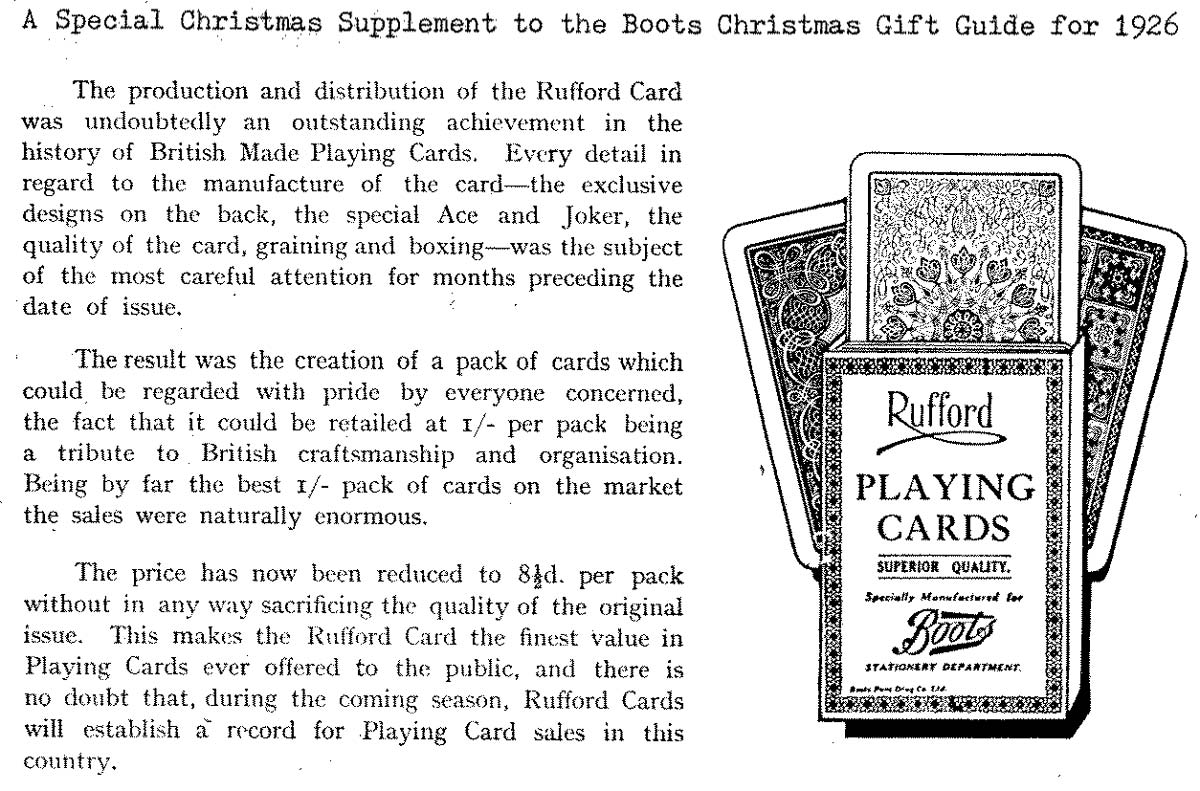
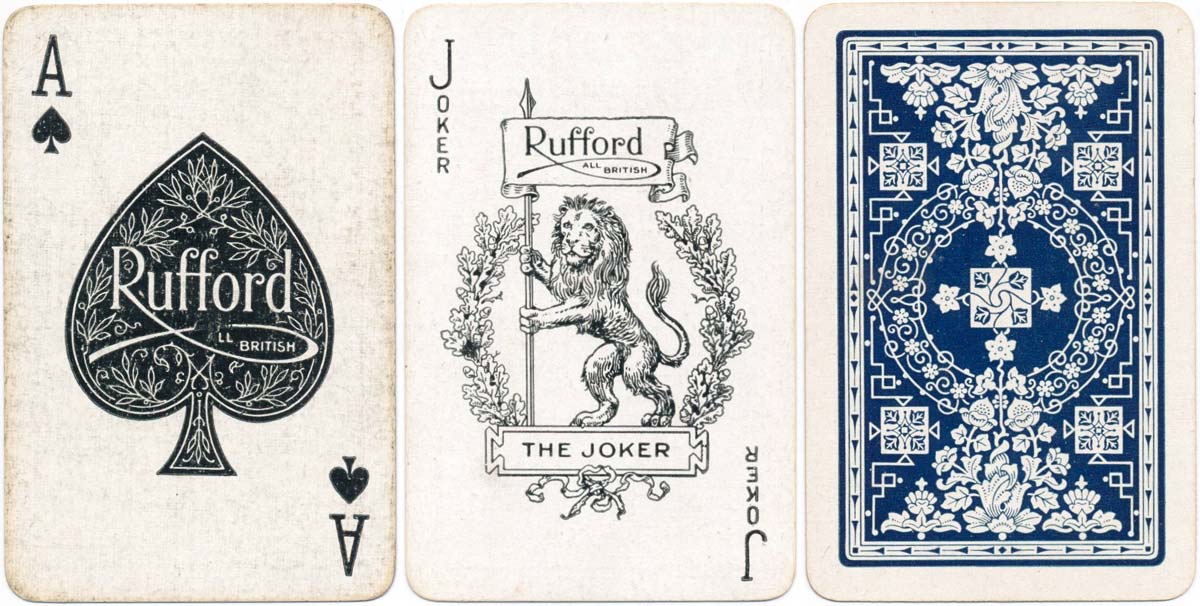
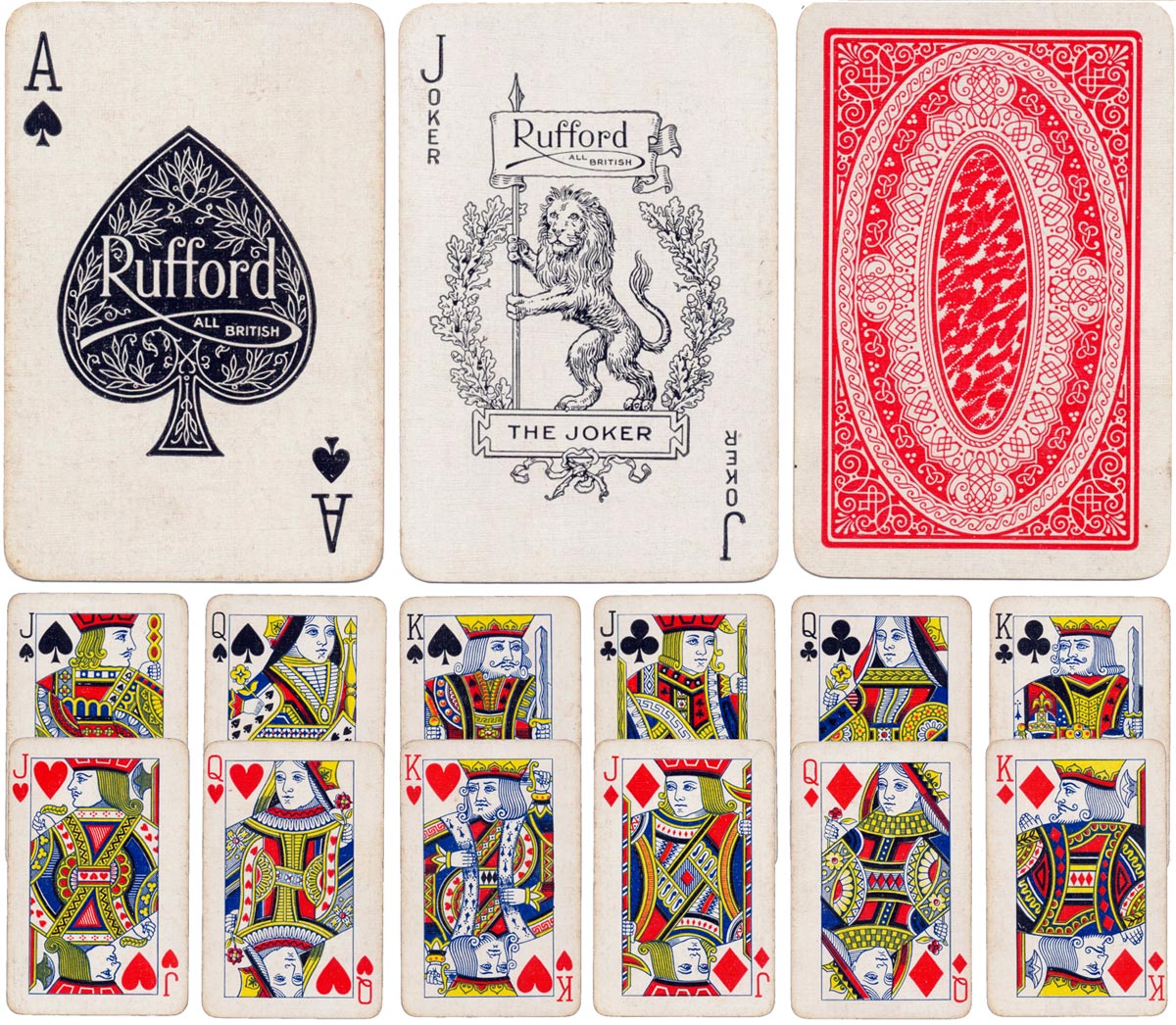
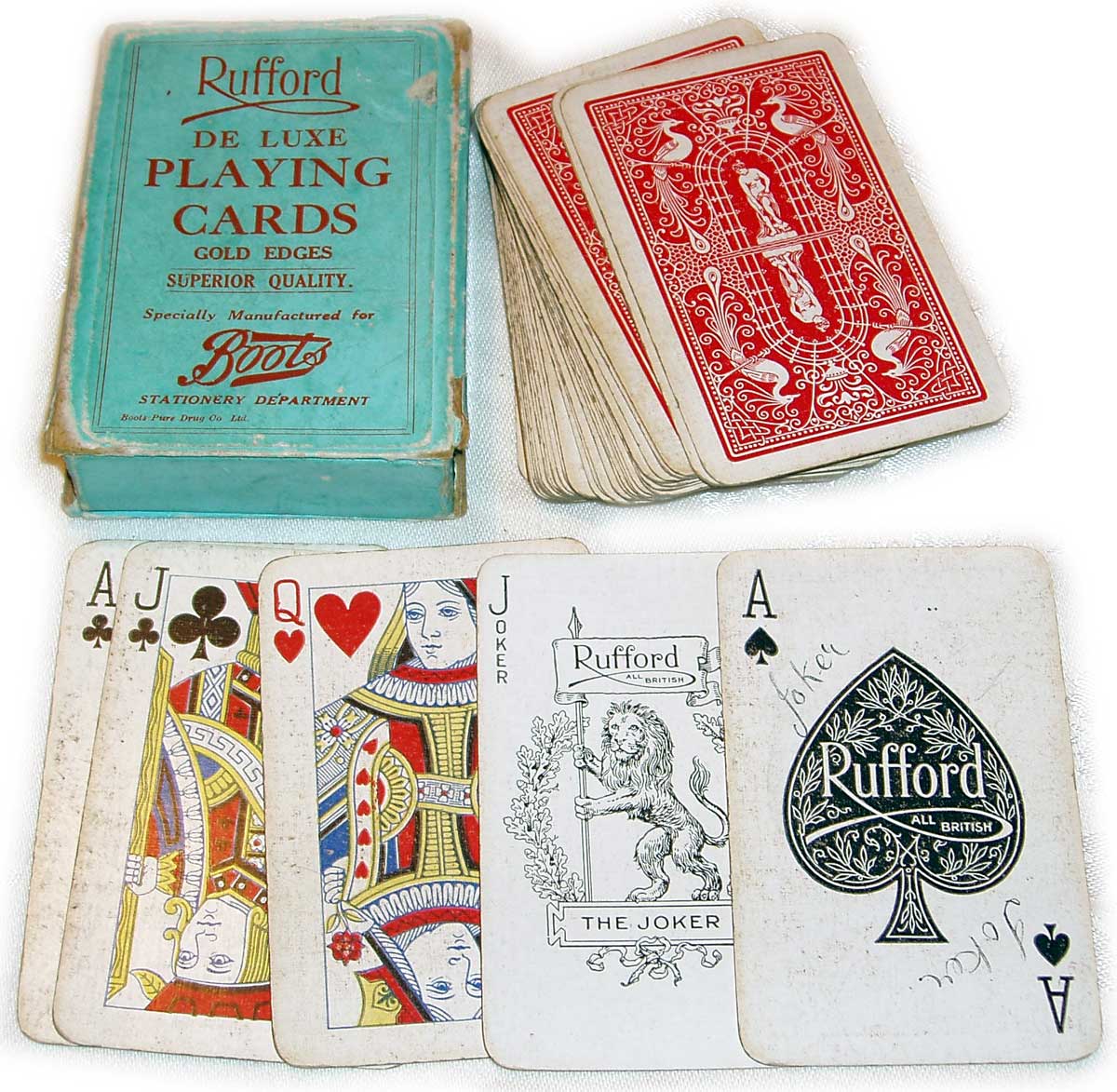
Above: examples of the earliest version of the ace of spades and joker. Most of the back designs were available in red or blue.
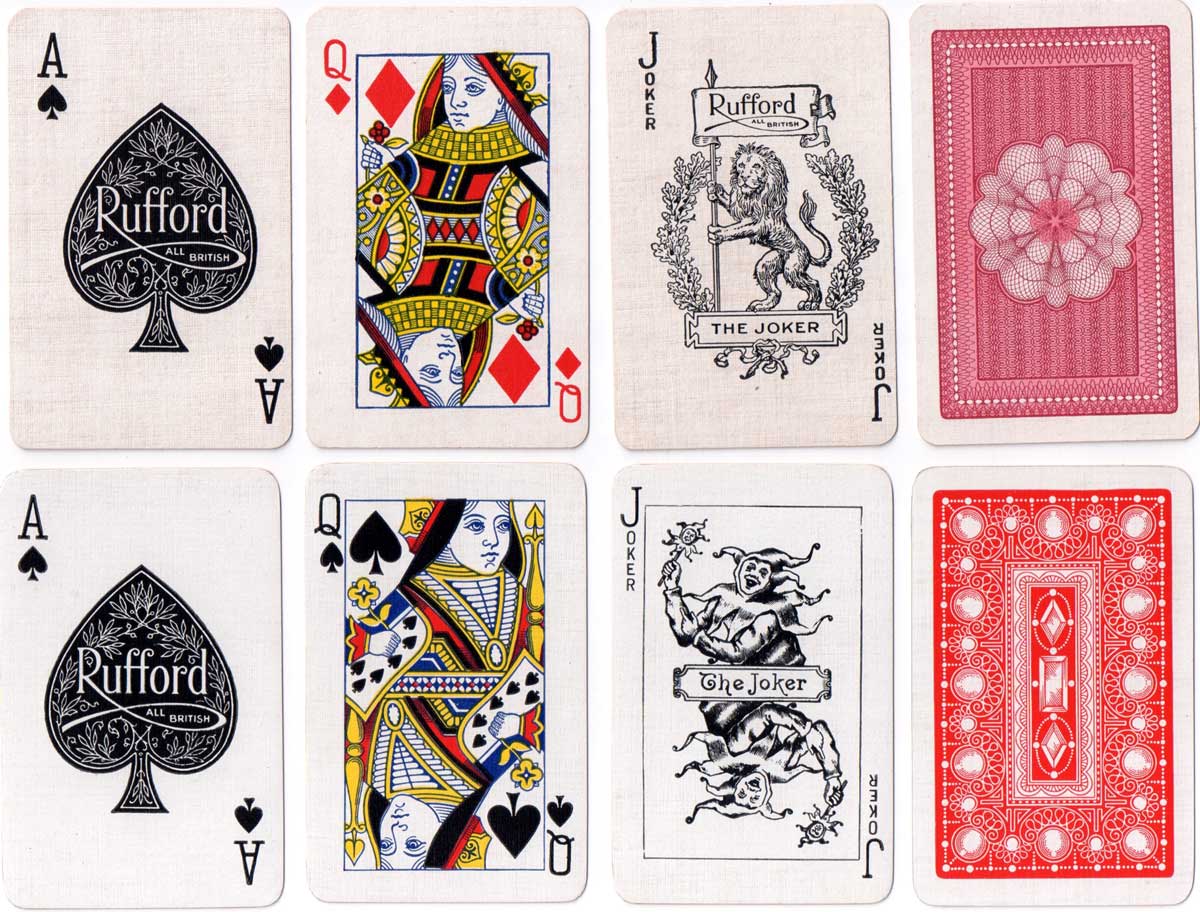
Above: Top: earliest smaller courts (GD11) with white on QD's shoulder, c.1932-35. Bottom: large courts still with later Q-index, DLR joker and 1935+ bridge score, 1935-39. Images courtesy Ken Lodge.
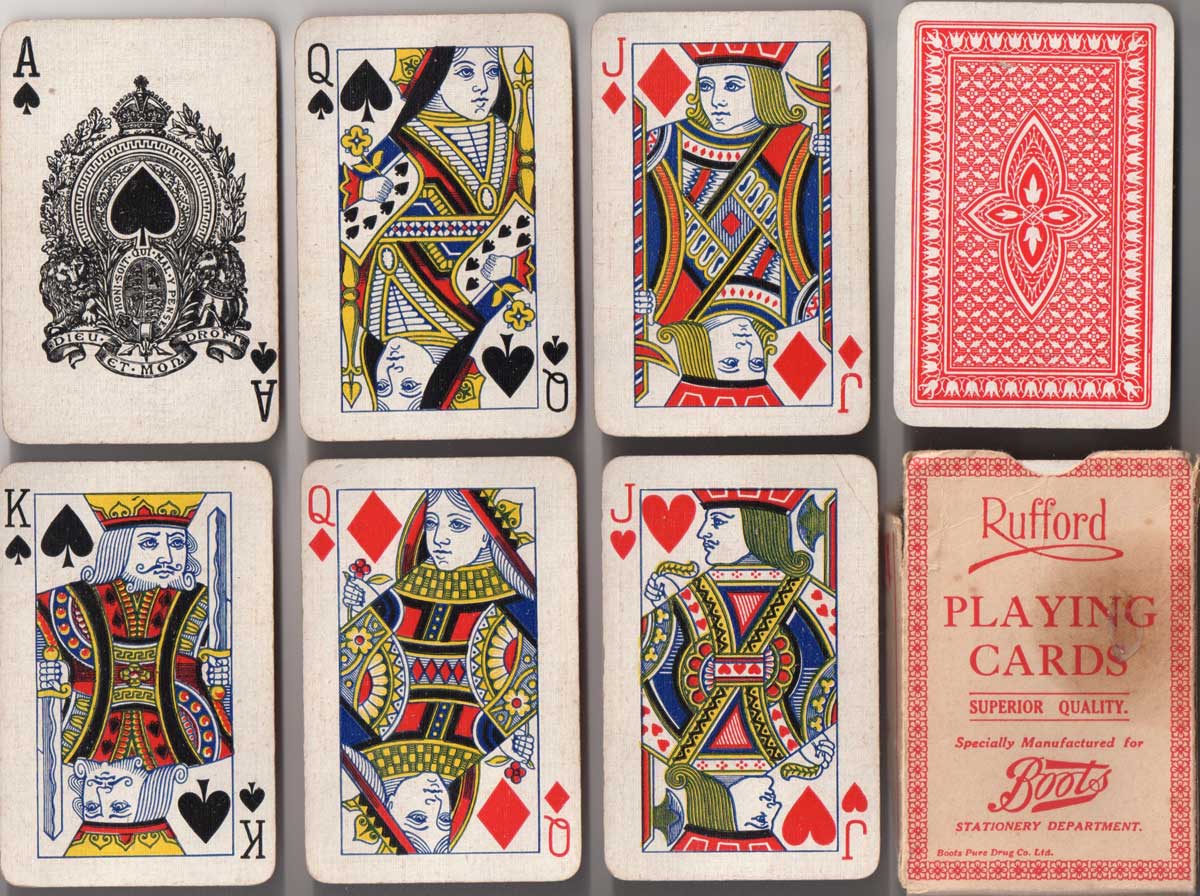
Above: earliest Q-index, Goodall anonymous ace of spades, c.1926-30. Images courtesy Ken Lodge.
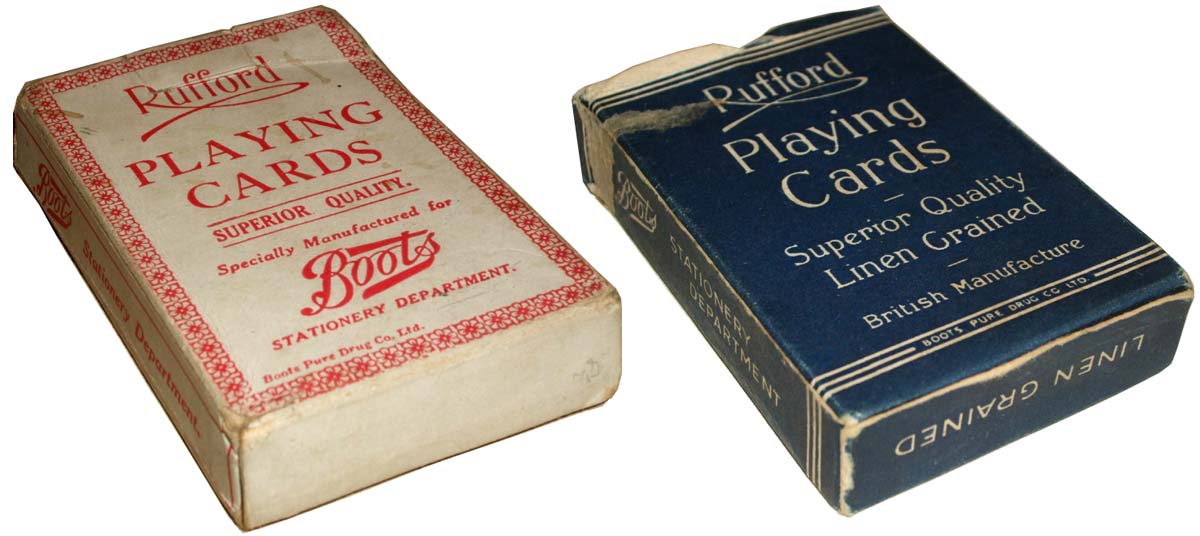
Above: Rufford boxes. Image courtesy Matt Probert.
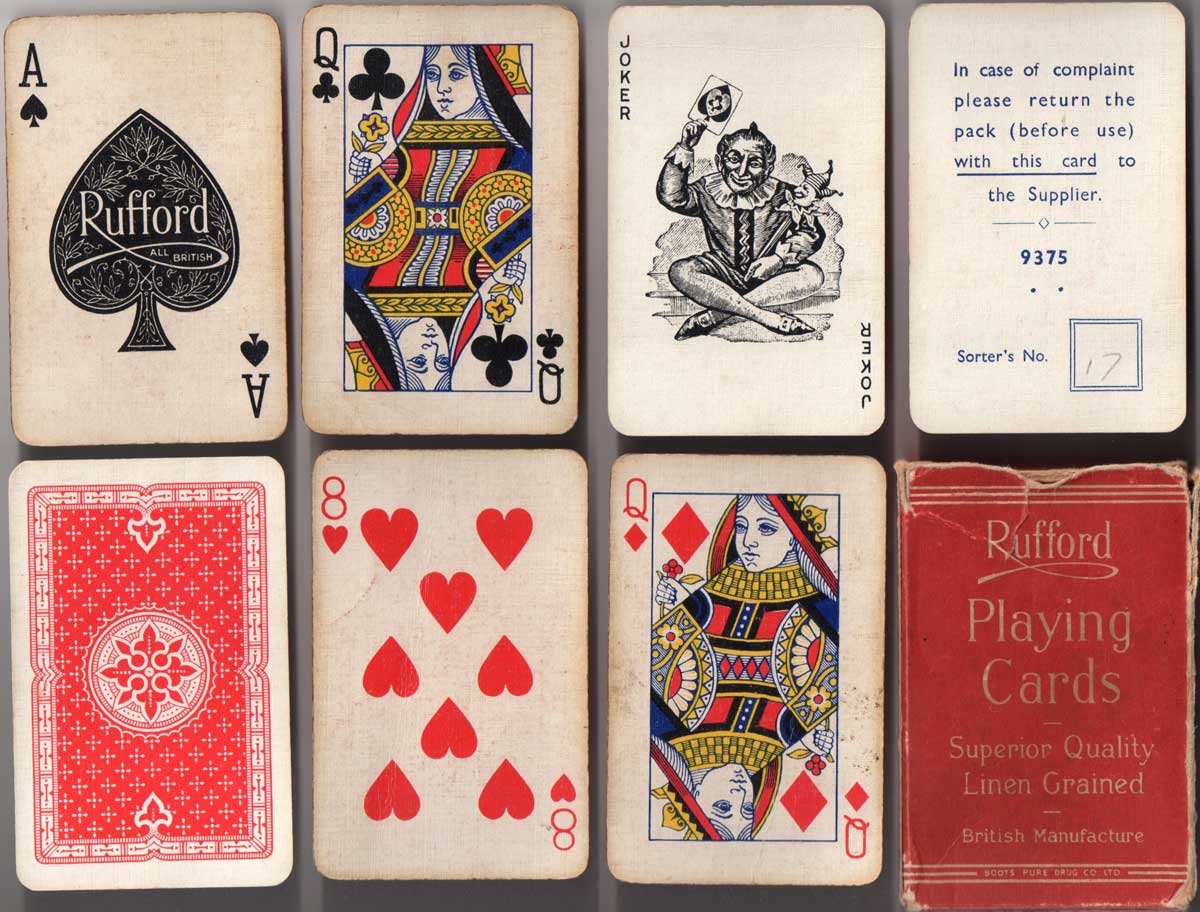
Above: a print run (by Waddington) found in WCMPC packs of 1944 & 1945, so probably c.1946. Images courtesy Ken Lodge.
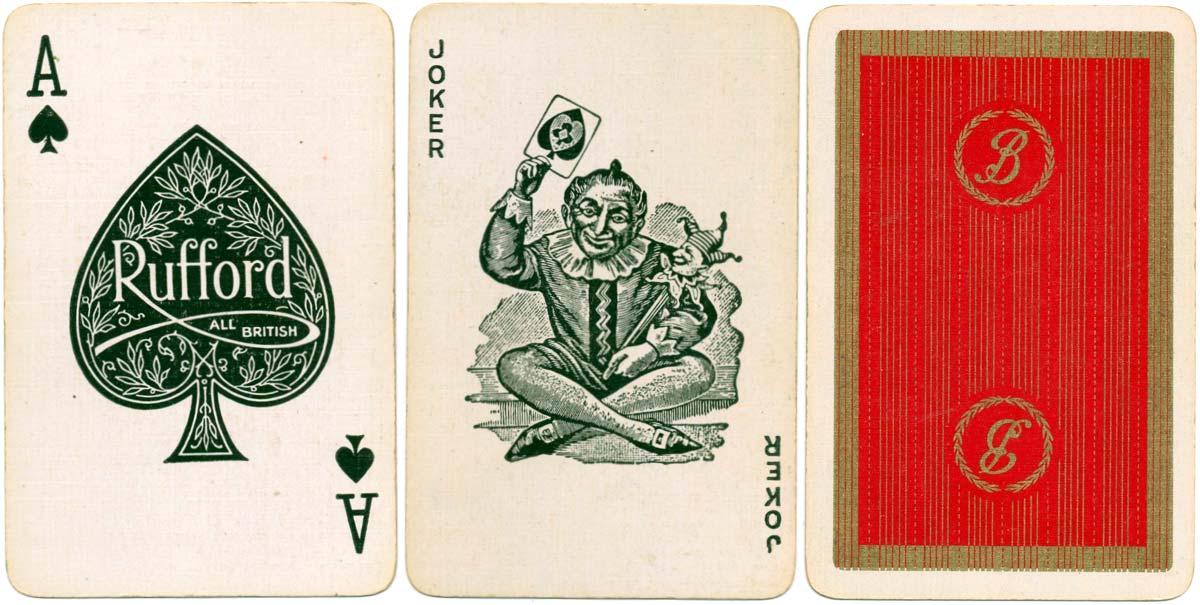
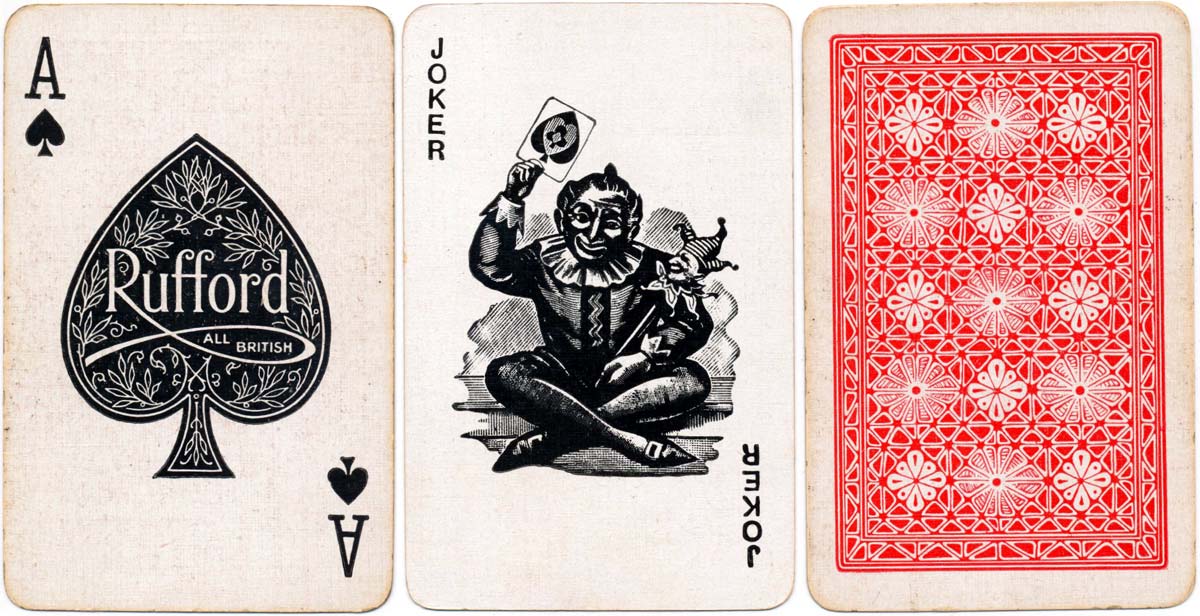
Above: first version of the ace of spades still in use with standard De la Rue joker, c.1950. Images courtesy Matt Probert.
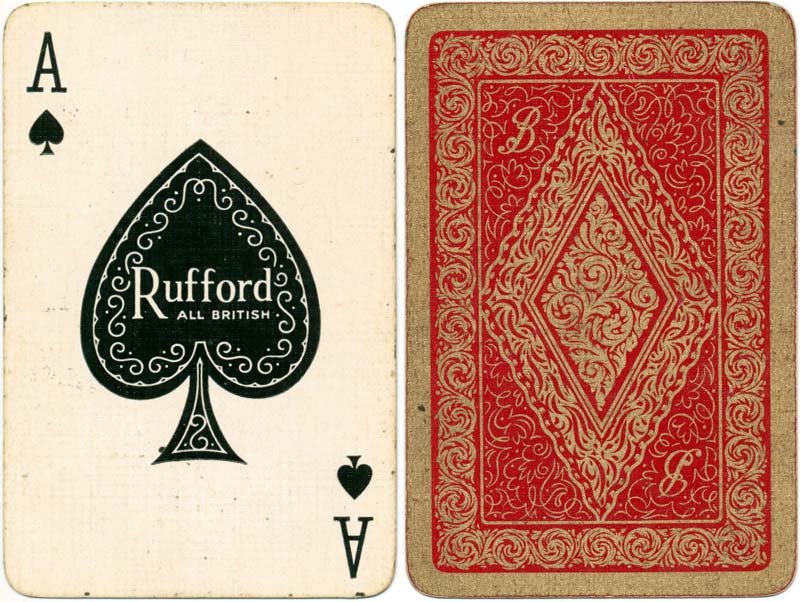
Above: the second version of the ace of spades, 1950s. Image courtesy Matt Probert.
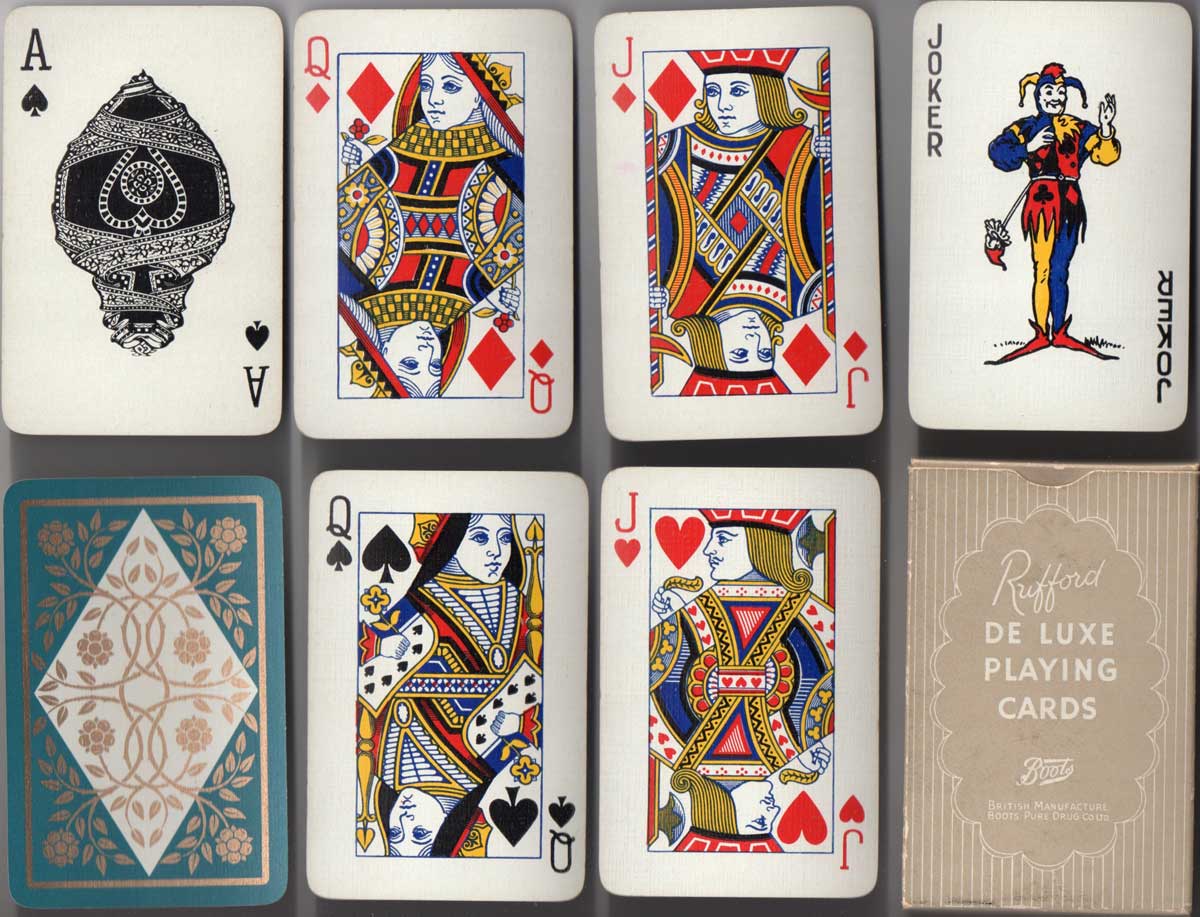
Above: Waddington printing with their anonymous ace of spades, c.1958. Images courtesy Ken Lodge.
By Simon Wintle
Spain • Member since February 01, 1996 • Contact
I am the founder of The World of Playing Cards (est. 1996), a website dedicated to the history, artistry and cultural significance of playing cards and tarot. Over the years I have researched various areas of the subject, acquired and traded collections and contributed as a committee member of the IPCS and graphics editor of The Playing-Card journal. Having lived in Chile, England, Wales, and now Spain, these experiences have shaped my work and passion for playing cards. Amongst my achievements is producing a limited-edition replica of a 17th-century English pack using woodblocks and stencils—a labour of love. Today, the World of Playing Cards is a global collaborative project, with my son Adam serving as the technical driving force behind its development. His innovative efforts have helped shape the site into the thriving hub it is today. You are warmly invited to become a contributor and share your enthusiasm.

Related Articles
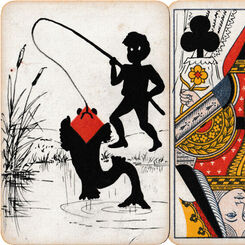
Hand-drawn transformation cards, c1875
A complete set of hand-drawn transformation cards from c1875, using a standard De La Rue pack.
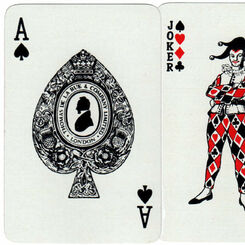
When three brands merge...
After De la Rue factories were bombed in 1940 their cards were printed by Waddingtons. In 1962 Waddi...
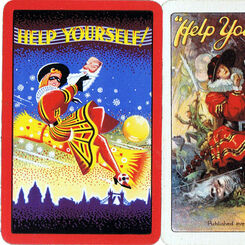
Help Yourself Society
The “Help Yourself” Society was formed in 1927 to run fundraising activities for hospitals.
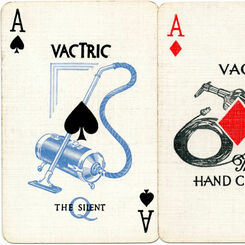
Vac-tric Electric Vacuum Cleaners
Vac-tric Electric Vacuum Cleaner playing cards manufactured by De la Rue, 1930s.
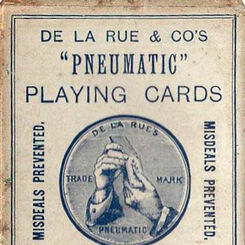
Pneumatic Series ‘F’
De la Rue Pneumatic Series ‘F’ playing cards, c.1925.
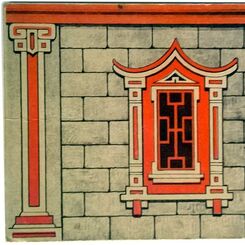
Rūfa
Rūfa is a game designed by Ernest Legh and manufactured by De la Rue. The object is to build a pagod...
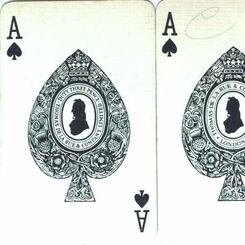
De la Rue’s 125th anniversary
In around 1955 De la Rue introduced a new coloured joker and a series of aces of spades with a silho...
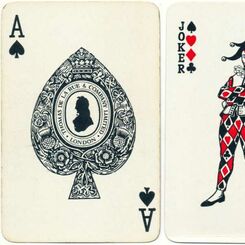
Pneumatic c.1960-1965
De la Rue were producing Pneumatic cards with the “special graining for ease of handling” as late as...
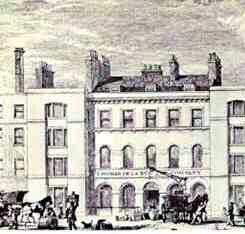
Draughts League Medals
Arthur Charles Prince worked for De la Rue as a playing card cutter and later was promoted to superv...
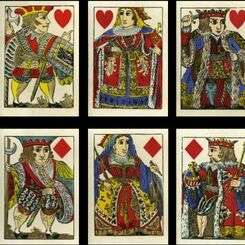
5: De La Rue
In December 1831 Thomas de la Rue was granted his patent for printing playing cards by letterpress.
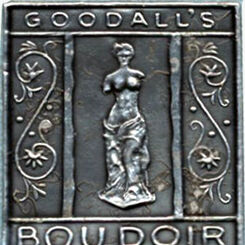
Boudoir
“Boudoir” playing cards were introduced by Chas Goodall & Son in 1906 in a new, slimmer size.
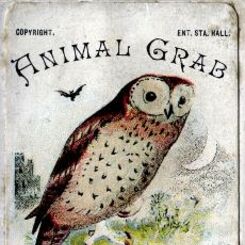
Animal Grab
Animal Grab card game by Thomas De La Rue & Co., 110 Bunhill Row, London..

Games Leaflets
Thos De la Rue & Co. & Gibson's Games Leaflets.

Swastika designs
Swastika design playing cards by De La Rue, c.1925.

Jean Picart le Doux
Jean Picart le Doux playing cards, issued in 1957 to celebrate the company's 125th anniversary, feat...
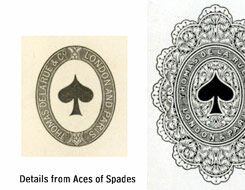
De La Rue Continental
During the latter part of the nineteenth century De La Rue produced two special packs of cards for t...

De La Rue
De La Rue introduced letter-press printing into playing card production and his patent was granted i...
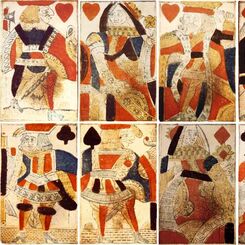
Hunt, c.1800
Standard English pattern playing cards manufactured by Hunt, c.1800.

Amalgamated Playing Card Co., Ltd
Agreement had been reached between Waddington's and De La Rue during the second world war for Waddin...

Carreras Ltd Tobacco Advertising
Carreras issued a number of advertising packs, cigarette and trade cards, miniature packs, etc durin...
Most Popular
Our top articles from the past 60 days






















